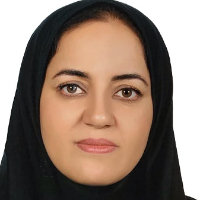Study on the chemical diversity of essential oil from different plant parts of Salvia sharifii Rech. f. & Esfand.
Salvia sharifii Rech. f. & Esfand. is an endemic medicinal plant in Iran and belongs to the Lamiaceae family. In the current study, different plant parts (flower, leaf, and stem) of this species were collected from the Bokhon region of Hormozgan province in March 2018 and were studied in terms of the amount of essential oil and variability in their composition. The essential oils of air-dried samples were extracted by hydro-distillation and analyzed by GC and GC-MS. The essential oil yield of flower, leaf, and stem was obtained 1.38, 1.14, and 0.84% (w/w), respectively. The total number of essential oil compounds identified and quantified was 45 in flower, 42 in leaf, and 43 in the stem. The results of essential oil compounds analysis revealed that linalool (38.7%), hexyl isovalerate (13.8%), hexyl caprylate (6.2%), hexyl isobutyrate (4.6%), hexyl-2-methyl butyrate (4.4%), trans-caryophyllene (3.8%), and n-hexyl hexanoate (3.7%) were the major compounds in flower. In leaf, linalool (17.0%), hexyl caprylate (11.1%), α-humulene (7.8%), trans-caryophyllene (6.2%), sclareol oxide (5.9%), nootkatone (3.7%), hexyl isovalerate (3.5%) and agarospirol (3.0%) had the highest amounts in essential oil. In stem essential oil, linalool (18.7%), sclareol oxide (8.0%), α-humulene (7.5%), trans-caryophyllene (7.2%), hexyl isovalerate (5.2%), caryophyllene oxide (5.0%), n-hexyl hexanoate (4.8%), nootkatone (4.1%) and dibutyl phthalate (4.0%) were the major compounds. The major and common compound in the different organs essential oil of this species was linalool which was the highest in flowers and the lowest in leaves. The presence of chemical diversity in the essential oil of different organs of this species can be considered by the pharmaceutical, food, and cosmetic industries, as well as medicinal plant breeders in selecting the appropriate organ for consumption and breeding purposes.
- حق عضویت دریافتی صرف حمایت از نشریات عضو و نگهداری، تکمیل و توسعه مگیران میشود.
- پرداخت حق اشتراک و دانلود مقالات اجازه بازنشر آن در سایر رسانههای چاپی و دیجیتال را به کاربر نمیدهد.


